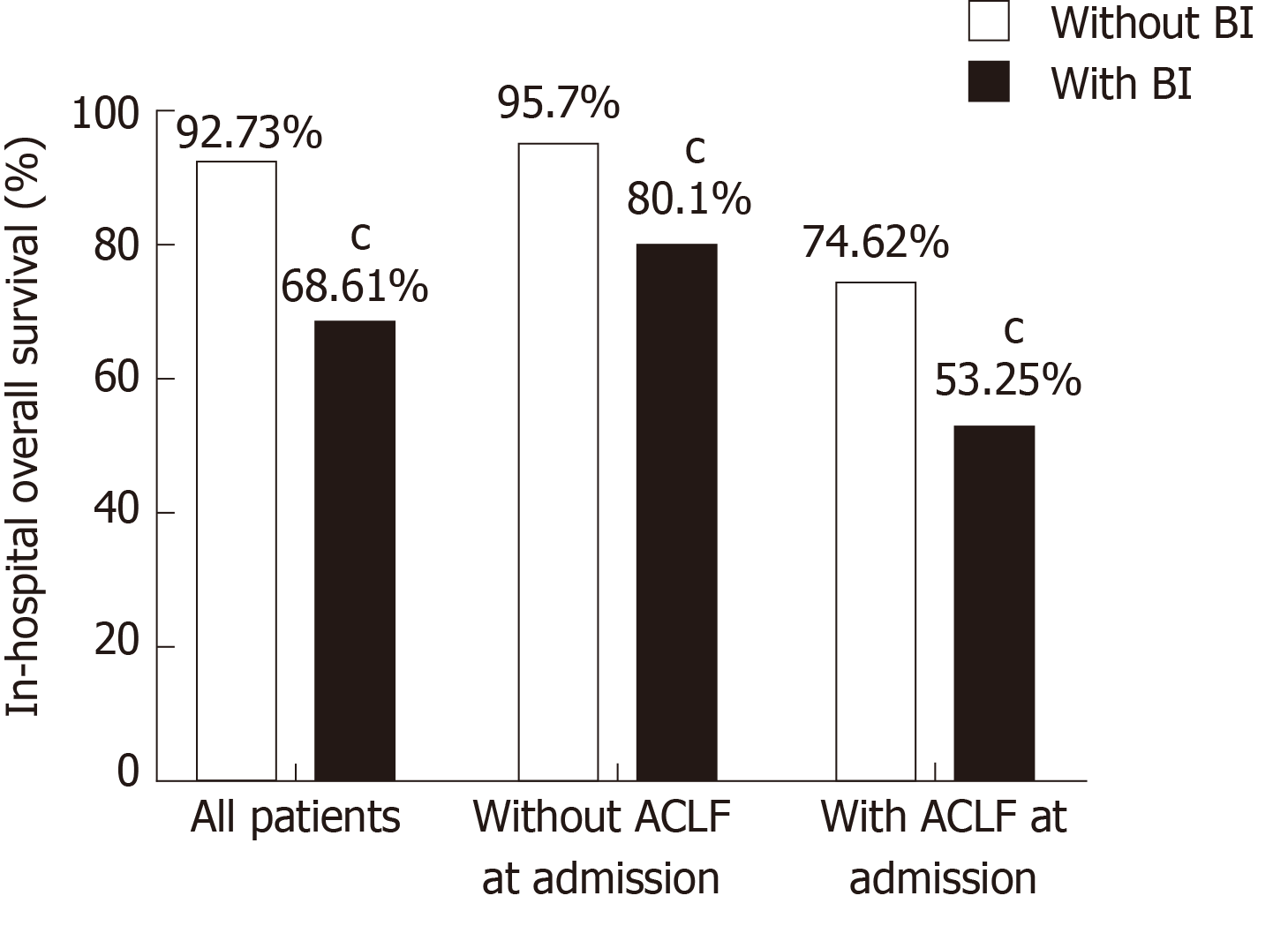Copyright
©The Author(s) 2020.
World J Gastroenterol. Feb 14, 2020; 26(6): 645-656
Published online Feb 14, 2020. doi: 10.3748/wjg.v26.i6.645
Published online Feb 14, 2020. doi: 10.3748/wjg.v26.i6.645
Figure 1 Flow chart for patient inclusion.
HBV: Hepatitis B virus.
Figure 2 Impact of bacterial infection on in-hospital overall survival according to the presence of acute-on-chronic liver failure.
aP < 0.05, bP < 0.01, cP < 0.001. ACLF: Acute-on-chronic liver failure; BI: Bacterial infection.
Figure 3 Impact of bacterial infection on 90-d transplant-free survival, liver transplantation rate, development of acute-on-chronic liver failure, and 5-year post-discharge transplant-free survival.
A: The 90-d transplant-free survival was significantly lower in patients with bacterial infection (BI) than in those without; B: The patients with BI had a significantly lower rate of liver transplantation than in those without; C: The cumulative incidence of ACLF during follow-up was significantly increased after the onset of BI; D: These patients had a significantly lower long term transplant-free survival compared to the patients who were free of BI during hospitalization. aP < 0.05, bP < 0.01, cP < 0.001. ACLF: Acute-on-chronic liver failure; BI: Bacterial infection.
- Citation: Cao ZJ, Liu YH, Zhu CW, Yin S, Wang WJ, Tang WL, Zhao GD, Xu YM, Chen L, Zhou TH, Cai MH, Wang H, Cai W, Bao SS, Li H, Xie Q. Bacterial infection triggers and complicates acute-on-chronic liver failure in patients with hepatitis B virus-decompensated cirrhosis: A retrospective cohort study. World J Gastroenterol 2020; 26(6): 645-656
- URL: https://www.wjgnet.com/1007-9327/full/v26/i6/645.htm
- DOI: https://dx.doi.org/10.3748/wjg.v26.i6.645











